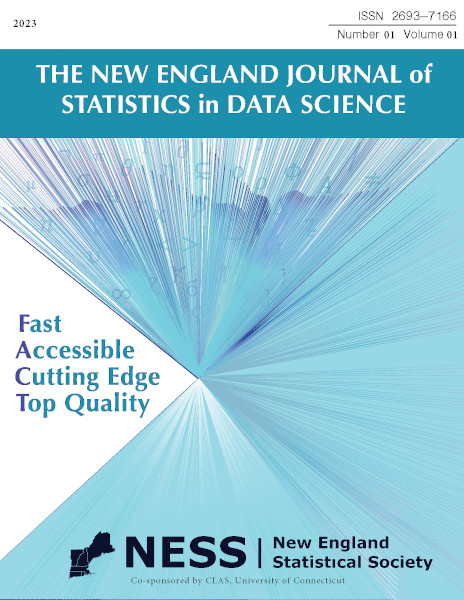Volume 1, Issue 1 (2023), April 2023
The New England Statistical Society launched a webinar series on selected papers published in the New England Journal of Statistics in Data Science. The inaugural webinar of this series for this issue is available here.

Order by:
Pub. online: 5 Oct 2022
Type: Methodology Article
 Open Access
Open Access
Area: Machine Learning and Data Mining
Abstract
Pub. online: 11 Jan 2023
Type: Methodology Article
 Open Access
Open Access
Area: Statistical Methodology
Abstract
Pub. online: 3 Dec 2021
Type: Case Study, Application, And/or Practice Article
 Open Access
Open Access
Area: NextGen
Abstract
Pub. online: 19 Oct 2022
Type: Commentary And/or Historical Perspective
 Open Access
Open Access
Area: Spatial and Environmental Statistics
Journal:
The New England Journal of Statistics in Data Science
Volume 1, Issue 1 (2023), pp. 102–109
Abstract
Pub. online: 4 Jan 2022
Type: Methodology Article
 Open Access
Open Access
Area: Statistical Methodology
Journal:
The New England Journal of Statistics in Data Science
Volume 1, Issue 1 (2023), pp. 110–121
Abstract